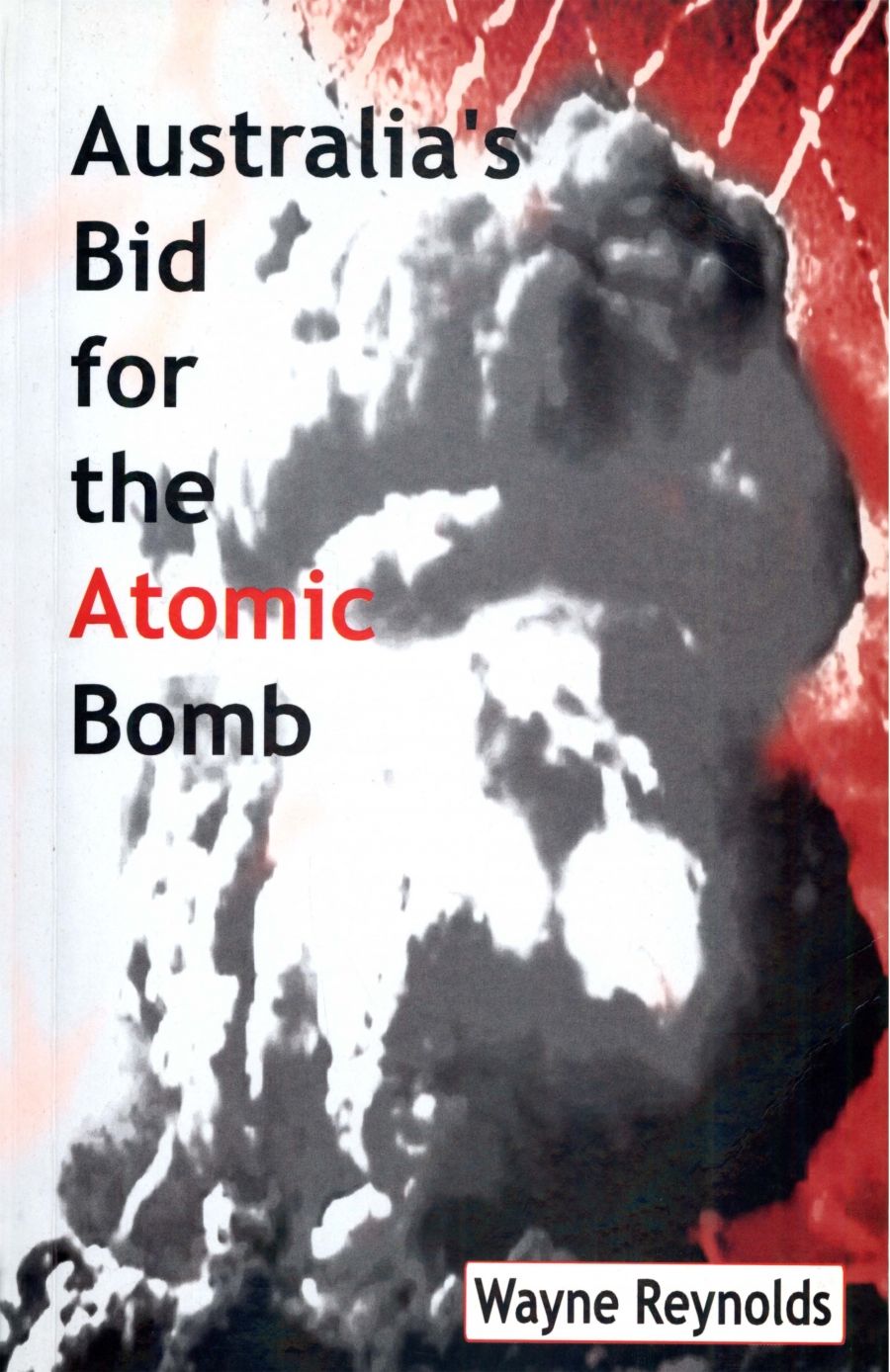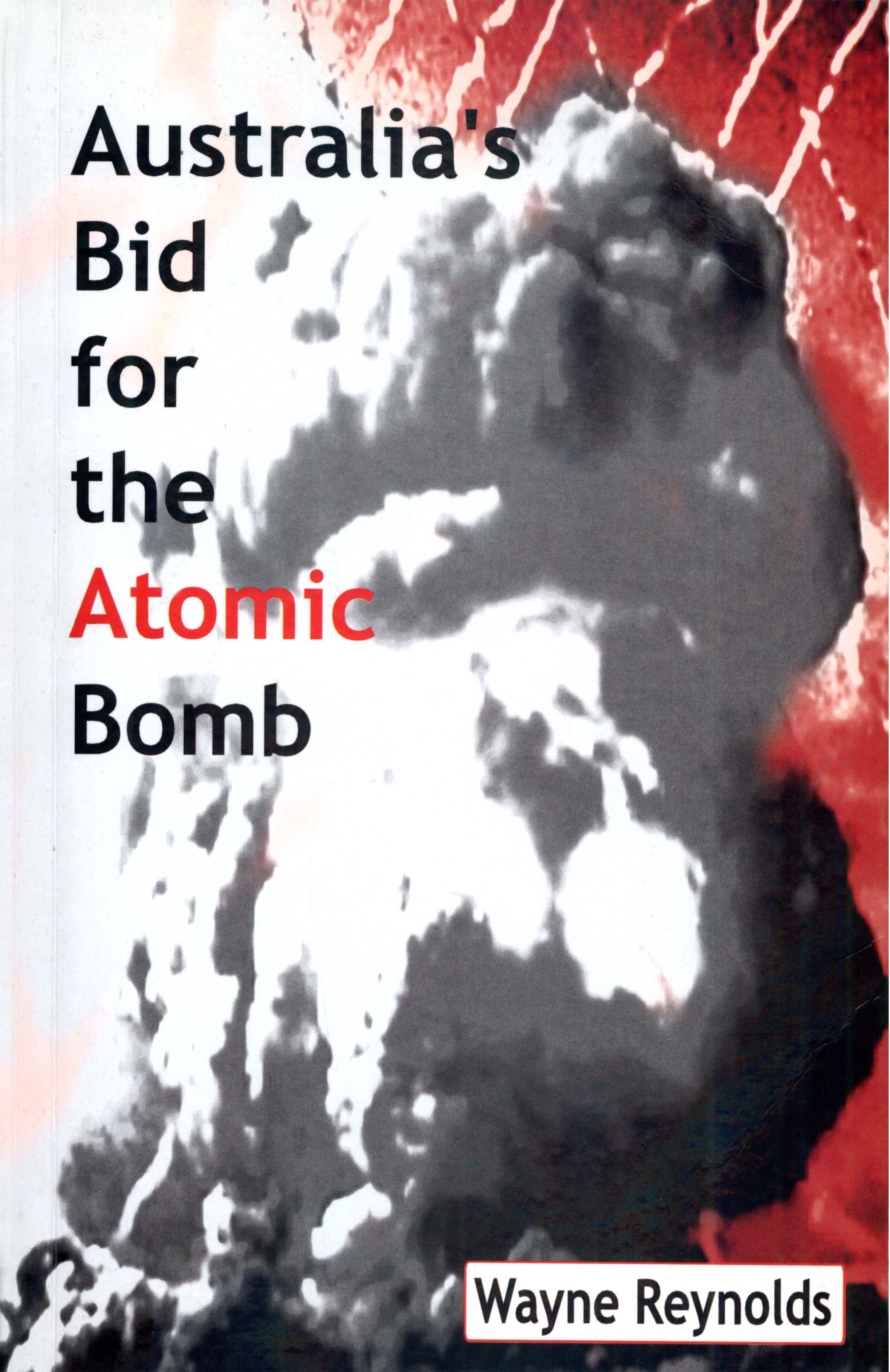
- Free Article: No
- Contents Category: History
- Review Article: Yes
- Article Title: Backing the Bomb
- Online Only: No
- Custom Highlight Text:
Australia’s bid for the atomic bomb is one of the great ‘what ifs’ of Australian history. Until now it has also been one of the greatest unknowns. According to Historian Wayne Reynolds, a convenient fiction has arisen which holds that all that really happened was that the Anglophile Menzies government allowed Britain to test its bombs at Maralinga to no great effect, except a legacy of radiation poisoning and contamination. The truth, he says, is much more complex, interesting and profound.
- Book 1 Title: Australia’s Bid for the Atomic Bomb
- Book 1 Biblio: Melbourne University Publishing, $32.95 pb, 292 pp
- Book 1 Cover Small (400 x 600):

- Book 1 Cover (800 x 1200):

Reynolds shows that from the outset there was strong bipartisan support for the atomic bomb. It was Ben Chifley, not Robert Menzies, who set in motion the big wheels of atomic research and development in Australia. A statement by leading scientist Sir Mark Oliphant at the height of the Cold War expresses the prevailing Australian attitude to its defence capability: ‘Australia should not bank on scientific weapons being so horrible that they could not be used because of fear of reprisals. Australia could be on its own if war broke out. We must be prepared to defend ourselves. We must develop scientific warfare.’
The perceived threat of global nuclear war forced Australia to think independently about defence for the first time, but the means to achieve this goal lay beyond its resources. Since the Americans, for security reasons, had decided not to share their technology with anyone, including their closest allies, Australia was obliged to enter into partnership with Britain and other Commonwealth countries in order to further its defence aims. Britain could not produce its own bomb alone: Australia, South Africa and New Zealand became involved in the supply of facilities, manpower and natural resources.
At this distance, it may be wondered why the Australian government fell so completely under the spell of the atomic bomb. Some understanding may perhaps be gained from the popular fiction of the time, which is as useful a guide as any to the deep-seated anxieties of a particular age. One of the biggestselling Australian novels of the 1950s was Nevil Shute’s On the Beach, which was made into a Hollywood blockbuster starring Gregory Peck and Ava Gardner (and which was also the basis for a more recent television mini-series). In the novel, nuclear war in the northern hemisphere has devastated much of the world, leaving only a few habitable areas, one of which happens to be Melbourne. What now seems like a far-fetched and rather melodramatic tale struck a chord with millions of readers and film-goers, to whom global war seemed a real possibility.
In the end, it was Australia’s geographical isolation as much as anything that precluded it from obtaining nuclear weapons. Britain cancelled the Commonwealth atomic program in 1957. The British government had decided to abandon any pretence of being a superpower and to place itself under American protection. The Americans had come to realise that the only way to prevent their most important allies from going off on nuclear frolics of their own was to share America’s weapons within an alliance governed by treaty.
Australia and South Africa, both of which had made a large contribution to the British-led research and development, found the nuclear door suddenly closed to them. No amount of cooperation and goodwill on the part of Australian officials could overcome the perception that Australia did not figure significantly enough in the Cold War military stand-off to have its own deterrent. As late as 1970, when Australia became a reluctant signatory to the Nuclear Non-Proliferation Treaty, there were hopes in Canberra that Australia would at least be allowed to purchase nuclear weapons from the United States. The South Africans, meanwhile, continued their own weapons program. In 1994, President F.W. de Klerk announced that his country had secretly produced six atomic bombs.
Reading between the densely packed lines of Reynolds’s meticulously researched narrative, we may speculate as to why Australia’s bid for the atomic bomb finally failed. During this period in its history, Australia was subject to an isolation anxiety comparable to that of the white minority government in South Africa, and, for that matter, the government of Israel, another small nation which developed its own atomic weapons program. Australia, however, did not have the will to strike out on its own, preferring in the end to offer its territory for American satellite tracking stations and to sell its uranium to other countries like France for use in their weapons programs. The geographical isolation that had fuelled the desire to obtain the atom bomb in the end also served to quench that desire. Nevil Shute’s vision may have been true, after all.
We should, of course, be deeply thankful that Australia has never produced or deployed morally indefensible weapons of mass destruction. It’s worth considering what might have happened if the Australian government, which at the time had no qualms about the weapon itself, had acquired the atomic bomb. Could Australia have become a truly independent nation in military terms, rather than one bound by treaty to foreign powers for its defence, with all the psychological inhibition that such a continued dependency involves? Perhaps a significant part of the Australian psyche will always be reluctant to strike out on its own, whether militarily, culturally, economically or politically. Could this be the real reason why Australia’s bid for the atomic bomb failed?


Comments powered by CComment